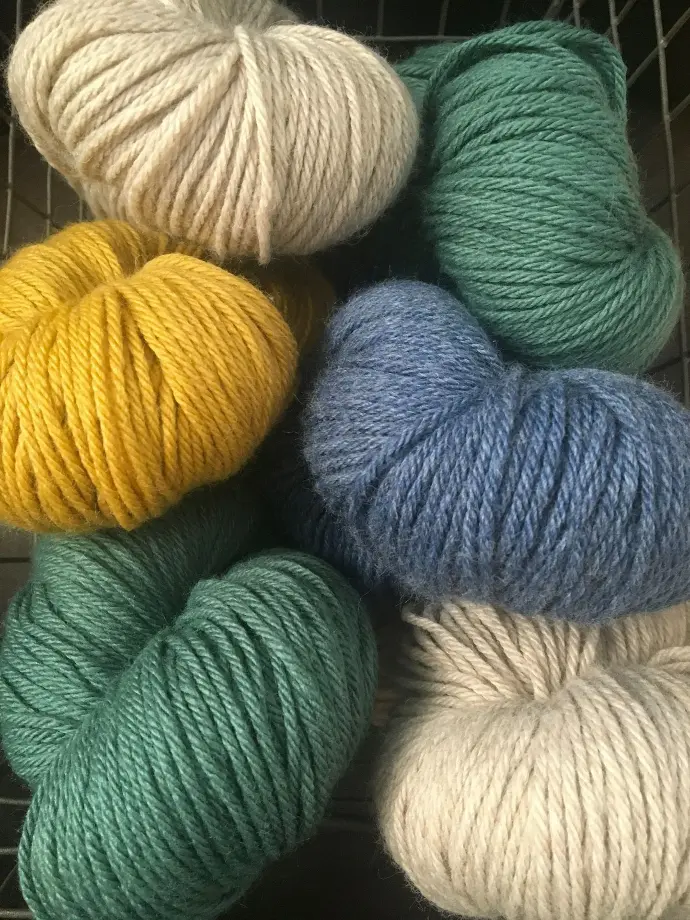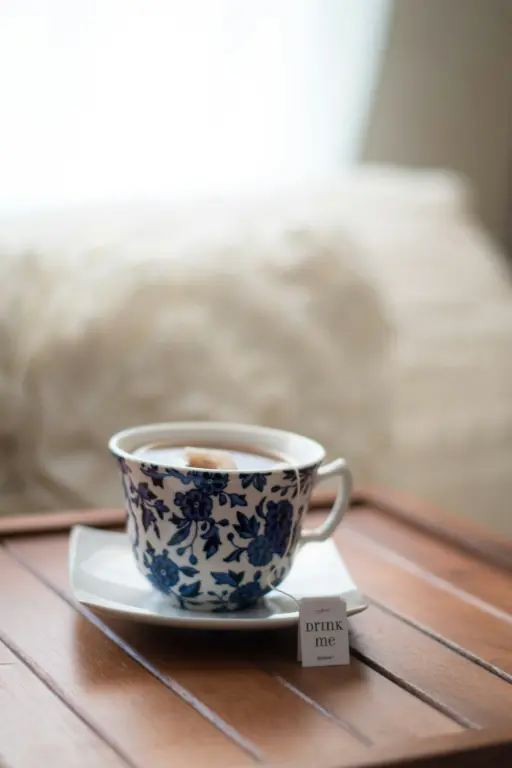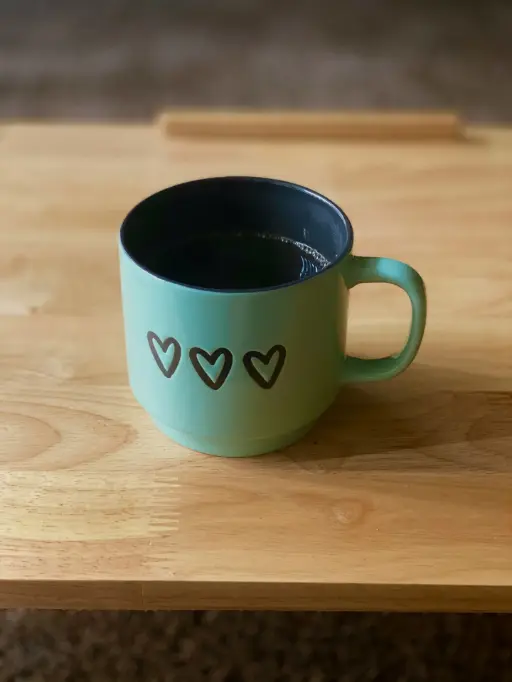In the textile industry, the washing label or care label plays an important role, not only as a guide to the proper care of textile products, but also as a key factor in complying with European directives. These labels, often small and inconspicuous, contain essential information about washing, drying, and ironing textile products. For importers bringing textiles from Asia to Europe, it is important that these washing labels are clear, correct, and in accordance with EU standards. This not only ensures satisfaction among the end consumer, but also strengthens confidence in the brand.
Why washing labels?
Care labels or washing labels are not just an addition to clothing and textile products; they are the silent guides that help consumers take good care of their purchases. From the correct washing program to the permissible drying method, every symbol on a care label serves a purpose. When you import textiles from countries such as Bangladesh and China, it is important to ensure that these labels contain the correct, understandable information for European consumers.
Washing label meaning and symbols
The meaning behind the symbols on washing labels is standardised in the EU under Regulation (EU) No. 1007/2011. This allows consumers in different EU countries to follow the same instructions without language barriers. Symbols range from washing and drying instructions to specific treatments such as dry cleaning and ironing. Symbols may vary from country to country, but most EU countries are members of GINETEX - an international textile labeling association - so they use the same washing symbols (also known as care symbols or laundry symbols) according to ISO 3758:2023.
List of washing symbols
 Washing
Washing
| Do not washThe washing symbol, a square open at the top with a wavy line and a cross through it, means that these items must not be washed. |
Washing allowedThe symbol for washing, a square open at the top with a wavy line inside, means that these items may be washed. The symbols below indicate how they may be dried. | |
30°C delicate washThe symbol for washing with the number 30 represents a wash cycle for dark-coloured items made of cotton, polyester, and blended fabrics. | |
30°C mild delicate washThe symbol for washing at 30°C with two stripes means that it is suitable for items made from modal, viscose, polyacrylic, polyester, and polyamide. | |
30°C very mild delicate washThe symbol for washing at 30°C with two stripes means that it is suitable for items made from, for example, machine-washable wool. | |
40°C coloured laundryThe symbol for washing with the number 40 represents a wash cycle for dark-coloured items made of cotton, polyester, and blended fabrics. | |
40°C delicate washThe symbol for washing at 40°C with one line means that it is suitable for delicate wash of modal, viscose or synthetic fibres (for example, polyacrylic, polyester and polyamide). | |
40°C very mild washThe garment should be washed at 40°C on a very gentle or delicate wash programme. Avoid rough handling, intensive movement, and hard spinning. | |
60°C coloured laundryThe symbol for washing with the number 60 indicates coloured items that should not be washed at boiling temperature, such as cotton, modal, polyester, and blended fabrics. | |
60°C coloured laundryThe symbol for washing at 60°C with one stripe means that it is suitable for "Easy care" coloured laundry. The drum should not be filled more than two-thirds. | |
70°C boiling washThe symbol for washing with the number 70 indicates items made of cotton or linen, white, that are suitable for washing at boiling temperature, dyed or printed, using an energy-saving method. | |
95°C boiling washThe symbol for washing with the number 95 indicates items made of cotton or linen, white, that are suitable for washing at boiling temperature, dyed or printed. | |
Hand wash (at 40°C)The symbol of washing with a hand in it stands for hand washing at a water temperature of maximum 40° C. | |
Hand wash (20-30°C)The washing symbol showing a hand with one line means that hand washing is permitted at ambient temperature, or a water temperature between approximately 20 and 30°C. |
 Bleaching
Bleaching
Do not bleachThe symbol for bleaching, a triangle with a cross through it, means that these items must not be bleached. | |
Bleaching allowedThe bleaching symbol, a triangle, means that bleaching with oxygen bleach (which is found in universal detergents) and chlorine bleach is permitted. | |
Only oxygen bleach allowedThe symbol for bleaching, a triangle with two lines inside it, means that bleaching with oxygen bleach (which is found in universal detergents) is permitted, but with chlorine bleach it is not. |
 Drying
Drying
Do not tumble dryThe symbol for drying, a square with a circle inside and a cross over it, means that these items must not be placed in the dryer. | |
Tumble drying allowedThe symbol for tumble drying is depicted as a square with a circle inside. The symbols below indicate how drying is allowed. | |
Mild drying process in the tumble dryerA square, containing a circle with one dot, means that tumble drying is allowed with a mild process with reduced thermal action (60°) and treatment time. | |
Normal drying process in the tumble dryerA square, with a circle containing two dots, means that tumble drying is allowed at normal load and temperature (80°) without restrictions. | |
Natural drying allowedA square is the symbol for natural drying. The symbols below indicate how drying is allowed. | |
Line dryingA square with a vertical stripe means that natural drying by means of line drying is permitted for all colourfast textiles. | |
Drip line dryingA square with two vertical stripes means that natural drying is permitted by means of line drying, for colourfast, large textiles to dry crease-free. | |
Dry flatA square with a horizontal stripe means that natural drying is permitted by laying the fabric flat to dry, for heavy, colourfast textiles. | |
Drip flat dryA square with two vertical stripes means that natural drying is permitted by laying the fabric flat to dry and drip, for colourfast but delicate textiles. | |
Dry flat in the shadeA square with one horizontal line and two diagonal lines means that natural drying is allowed by laying flat in the shade, for wool or delicate textiles. | |
Drip flat in the shadeA square with two horizontal stripes and two diagonal stripes means that natural drying is permitted by laying flat to dry and dripping in the shade, for example, for woollen coats. | |
Line dry in the shadeA square with one vertical stripe and two diagonal stripes means that natural drying is permitted by means of line drying in the shade, for textiles that are not colourfast, such as silk, for example. | |
Drip line dry in the shadeA square with two vertical stripes and two diagonal stripes means that natural drying is permitted by means of drip line drying in the shade, for delicate textiles such as silk, for example. |
 Ironing
Ironing
Do not ironThe iron with a cross through it means that these items should not be ironed. | |
Ironing allowedThe iron is the symbol for ironing. The symbols below indicate how ironing may be done. | |
Iron at low temperatureAn iron with one dot indicates ironing at a maximum soleplate temperature of 120 °C. For polyacrylic, polyamide (nylon), and acetate. Steam may cause damage. | |
Iron at moderate temperatureAn iron with two dots indicates that it can be used for ironing at a maximum soleplate temperature of 160 °C, suitable for wool, silk, polyester, and viscose. Steam can be used, avoid heavy pressure. | |
Hot ironAn iron with three dots indicates that it can be used for ironing at a maximum soleplate temperature of 210 °C, suitable for cotton and linen. Steam can be used. | |
Iron at low temperature without steamAn iron with one dot and a cross through the steam at the bottom indicates ironing at a maximum soleplate temperature of 120 °C without steam, for polyacrylic, polyamide (nylon), and acetate. |
 Professional cleaning
Professional cleaning
Professional cleaning not allowedA circle with a cross through it means that dry cleaning is not permitted. Also, do not use stain removers that contain solvents. | |
Professional wet cleaning permittedA circle is the symbol for professional wet cleaning. The symbols below indicate how cleaning may be carried out. | |
Do not wet cleanA circle with a W inside it, crossed through, means that professional wet cleaning is not permitted. | |
Professional wet cleaningA circle containing the letter W stands for normal wet cleaning methods without restrictions. | |
Mild professional wet cleaningA circle containing the letter W and a line underneath represents a wet cleaning technique for delicate textiles with reduced mechanical action. | |
Very mild professional wet cleaningA circle containing the letter W and two dashes underneath represents wet cleaning techniques for very delicate textiles with significantly reduced mechanical action. | |
Normal cleaning process without restrictionsThe letter F in a circle represents a normal cleaning process without restrictions. Commercially available solvent-based stain removers should not be used. | |
Professional steaming in hydrocarbons (heavy gasolines).The letter F in a circle with a dash represents a mild cleaning process with strict limits on added humidity, mechanical action and temperature. Commercially available solvent-based stain removers should not be used. | |
Professional steaming in perchlorethylene or hydrocarbons (heavy gasolines)The letter P in a circle represents a normal cleaning process without restrictions. Commercially available solvent-based stain removers may be used with some restrictions. It is recommended to perform a test on a hidden part of the item beforehand. | |
Professional steaming in perchlorethylene or hydrocarbons (heavy gasoline).The letter P with a dash represents a mild cleaning process with strict limitations on added moisture, mechanical action, and/or temperature. Commercially available solvent-based stain removers may be used with certain restrictions. It is recommended to conduct a test on a hidden part of the item beforehand. |
 Washing
Washing
| Do not washThe washing symbol, a square open at the top containing a wavy line with a cross through it, means that these items should not be washed. |
Washing allowedThe washing symbol, a square open at the top with a wavy line in it, means that these items may be washed. The symbols below indicate how drying is allowed. | |
30°C delicate washThe wash symbol containing the number 30 represents a wash cycle for dark-colored items in cotton, polyester and mixed fabrics. | |
30°C mild delicate washThe 30°C wash symbol with two dashes means it is suitable for items made from modal, viscose, polyacrylic, polyester and polyamide. | |
30°C very mild delicate washThe 30°C wash symbol with two dashes means it is suitable for items made from machine washable wool, for example. | |
40°C coloured laundryThe wash symbol containing the number 40 represents a wash cycle for dark-colored items in cotton, polyester and mixed fabrics. | |
40°C delicate washThe 40°C wash symbol with one line means that it is suitable for delicate washing of modal, viscose or synthetic fibers (e.g. polyacrylic, polyester and polyamide). | |
40°C very mild washThe 30°C wash symbol with two dashes means it is suitable for items made of machine washable wool. | |
60°C coloured laundryThe washing symbol containing the number 60 represents colored items that should not be washed at boiling temperatures, such as cotton, modal, polyester and mixed fabrics. | |
60°C coloured laundryThe 60°C wash symbol with one line means it is suitable for “Easy care” colored laundry. The drum should not be more than two-thirds full. | |
70°C boiling washThe washing symbol containing the number 70 stands for articles made of cotton or linen, white, suitable for washing at boiling temperature, dyed or printed, with an energy-saving method. | |
95°C boiling washThe washing symbol containing the number 95 represents articles made of cotton or linen, white, suitable for washing at boiling temperature, dyed or printed. | |
Hand wash (at 40°C)The symbol of washing with a hand in it stands for hand washing at a water temperature of maximum 40° C. | |
Hand wash (20-30°C)The washing symbol showing a hand with one line means that hand washing is permitted at ambient temperature, or a water temperature between approximately 20 and 30°C. |
 Bleaching
Bleaching
Do not bleachThe bleaching symbol, a triangle with a cross through it, means that these items should not be bleached. | |
Bleaching allowedThe symbol of bleaching, a triangle, means that bleaching with oxygen bleach (found in all-purpose detergents) and chlorine bleach are allowed. | |
Only oxygen bleach allowedThe bleaching symbol, a triangle with two lines through it, means that bleaching with oxygen bleach (which is contained in universal detergents) is permitted, but not with chlorine bleach. |
 Drying
Drying
Do not tumble dryThe drying symbol, a square with a circle in it and a cross over it, means that these items should not be put in the dryer. | |
Tumble drying allowedThe symbol for tumble drying is depicted as a square with a circle inside. The symbols below indicate how drying is allowed. | |
Mild drying process in the tumble dryerA square, containing a circle with one dot, means that tumble drying is allowed with a mild process with reduced thermal action (60°) and treatment time. | |
Normal drying process in the tumble dryerA square containing a circle with two dots means that tumble drying is allowed at normal load and temperature (80°) without restrictions. | |
Natural drying allowedA square is the symbol for natural drying. The symbols below indicate how drying is allowed. | |
Line dryingA square with a vertical stripe means that natural drying by means of line drying is permitted for all colourfast textiles. | |
Drip line dryingA square with two vertical stripes means that natural drying is allowed through line drying, for colourfast, large textiles to dry wrinkle-free. | |
Dry flatA square with a horizontal line means that natural drying is allowed by drying textiles flat, for heavy, colourfast textiles. | |
Drip flat dryA square with two vertical stripes means that natural drying is allowed by laying textiles flat and drip drying, for colourfast but delicate textiles. | |
Dry flat in the shadeA square with one horizontal stripe and two diagonal stripes means that natural drying is allowed by flat drying in the shade, for woolen or delicate textiles. | |
Drip flat in the shadeA square with two horizontal stripes and two diagonal stripes means that natural drying is allowed by flat drying and drip drying in the shade for wool coats, for example. | |
Line dry in the shadeA square with one vertical stripe and two diagonal stripes means that natural drying is allowed by line drying in the shade, for textiles that are not colourfast, such as silk. | |
Drip line dry in the shadeA square with two vertical stripes and two diagonal stripes means that natural drying is allowed by drip line drying in the shade, for delicate textiles such as silk |
 Ironing
Ironing
Do not ironThe iron with a cross through it means that these items should not be ironed. | |
Ironing allowedThe iron is the symbol for ironing. The symbols below indicate how ironing is allowed. | |
Iron at low temperatureAn iron with one dot in it represents ironing at a maximum soleplate temperature of 120 °C. For polyacrylic, polyamide (nylon) and acetate. Steam can cause damage. | |
Iron at moderate temperatureAn iron with two dots in it represents ironing at a maximum soleplate temperature of 160 °C, for wool, silk, polyester and viscose. Steam can be used, avoid heavy pressure. | |
Hot ironAn iron with three dots in it represents ironing at a maximum soleplate temperature of 210 °C, for cotton and linen. A steam can be used. | |
Iron at low temperature without steamAn iron with one dot and a cross through the steam at the bottom represents ironing at a maximum soleplate temperature of 120 °C without steam, for polyacrylic, polyamide (nylon) and acetate. |
 Professional cleaning
Professional cleaning
Professional cleaning not allowedA circle with a cross through it means that dry cleaning is not permitted. Also do not use stain removers that contain solvents. | |
Professional wet cleaning permittedA circle is the symbol for professional wet cleaning. The symbols below indicate how cleaning is allowed. | |
Do not wet cleanA circle containing a W with a cross through it means that no professional wet cleaning is allowed. | |
Professional wet cleaningA circle containing the letter W represents normal wet cleaning methods without restrictions. | |
Mild professional wet cleaningA circle containing the letter W and a line below it represents wet cleaning technique for sensitive textiles with reduced mechanical action. | |
Very mild professional wet cleaningA circle containing the letter W and two dashes below it represents wet cleaning techniques for very sensitive textiles with much reduced mechanical action. | |
Normal cleaning process without restrictionsThe letter F in a circle represents a normal cleaning process without restrictions. Commercially available solvent-based stain removers should not be used. | |
Professional steaming in hydrocarbons (heavy gasolines).The letter F in a circle with a dash represents a mild cleaning process with strict limits on added humidity, mechanical action and temperature. Commercially available solvent-based stain removers should not be used. | |
Professional steaming in perchlorethylene or hydrocarbons (heavy gasolines)The letter P in a circle represents a normal cleaning process without restrictions. Commercially available solvent-based stain removers may be used with some restrictions. It is recommended to perform a test on a hidden part of the item beforehand. | |
Professional steaming in perchlorethylene or hydrocarbons (heavy gasoline).The letter P with a dash represents a mild cleaning process with strict limits on added humidity, mechanical action and/or temperature. Commercially available solvent-based stain removers may be used with some restrictions. It is recommended to perform a test on a hidden part of the item beforehand. |
Symbols according to ISO 3758:2023
It is important for importers to ensure that the care labels on their products correctly and clearly display these symbols. Errors in these labels can lead to damage to the product by the consumer, which can damage the brand's reputation. Please note: it happens that suppliers in Asia advise washing symbols that do not comply with EU legislation, but are, for example, American symbols. Therefore, make sure you receive the correct symbols.
Is a washing label mandatory?
Any product placed on the EU market containing more than 80% textile fibers must be labeled to indicate its fiber composition. These labels must be firmly attached to the product, for example sewn in. These labels may relate to, for example, clothing, furniture upholstery, mattress covers and camping tents.
In the EU, textile labels are mandatory for products sold to consumers. However, when selling between companies, these labels can be replaced or supplemented by commercial documents.
Read more:

What is circularity? The key to a sustainable future
Circularity is an answer to the traditional, linear economic model of 'take, make, use and throw away', offering a more sustainable and responsible way of living and doing business.
How are the washing symbols determined?
Determining what exactly goes on a care label is a process that requires both care and knowledge of international standards. Manufacturers and importers must carefully analyze the composition of their textile products to understand which washing, drying, and ironing instructions are appropriate. This process often includes testing and evaluation to ensure that the recommended care instructions do not damage the product and extend its life. The symbols are placed based on this.
Conclusion
Care labels are more than just instructions; they are an essential part of the product that contributes to sustainable use and customer satisfaction. For importers from Asia, accurate implementation of these labels not only provides a way to meet EU standards, but also to positively differentiate themselves in the market. By paying proper attention to these small but significant details, importers can ensure their success in the European market and contribute to a positive user experience.
Do you want to improve the quality of your textile imports and comply with EU standards?
To learn more about using care labels correctly and ensuring consumer satisfaction, contact us today!
















































